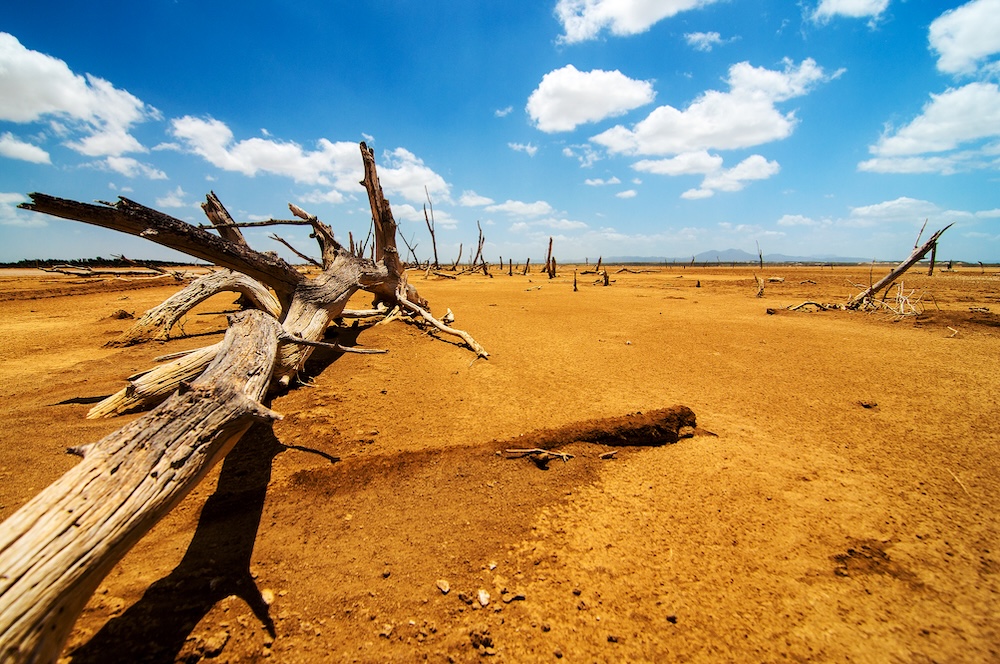What Is a Flash Drought?
Most people are familiar with droughts as slow-building events — months or even years without rain. But flash droughts are different. They come on suddenly, sometimes in a matter of days or weeks, drying out the landscape before anyone has time to react.
These aren’t your average dry spells. Flash droughts intensify so quickly that they can devastate crops, fuel wildfires, and strain water supplies — all before traditional drought indicators even catch up.
Why Flash Droughts Are on the Rise
The rise of flash droughts is closely linked to climate change. As global temperatures increase, so does the speed and volatility of the water cycle. Here’s what’s driving the trend:
- Hotter temperatures increase evaporation rates, drying out soil faster
- Shifting rainfall patterns mean longer dry gaps between storms
- Earlier springs and longer summers stretch the warm season, giving more time for drought conditions to develop
- High winds and low humidity compound drying, especially during heatwaves
In the past, drought was a creeping threat. Today, it can appear overnight — catching farmers, firefighters, and city planners off guard.
Real Flash Drought Events
Here are just a few recent examples that show the growing threat:
- United States (2022): Flash drought hit the central U.S. in early summer, drying soil within two weeks across Oklahoma, Kansas, and Nebraska. Crops withered just as the growing season peaked.
- Europe (2023): Much of southern Europe saw sudden heat-driven drought conditions that sparked wildfires and drained river levels to historic lows.
- Brazil (2024): In the Amazon and Pantanal regions, flash drought conditions escalated wildfire risk and threatened freshwater supplies.
- China (2022–2025): A series of fast-onset droughts disrupted rice and wheat production across key agricultural zones.
These events are happening more often — and affecting regions that aren’t used to them.
What Makes Flash Droughts So Dangerous?
Flash droughts can be even more destructive than long-term droughts for several reasons:
- Lack of warning: With only a few days of lead time, farmers can’t adjust planting, irrigate in time, or harvest early
- Crop loss: Sensitive crops like corn, soybeans, and rice can be ruined by even a short dry spike during flowering or fruiting
- Wildfire risk: Rapid drying turns vegetation into tinder, increasing the risk of explosive wildfires
- Water stress: Sudden drops in soil moisture reduce groundwater recharge and overwhelm irrigation systems
- Heat compounding: Often tied to extreme heat waves, flash droughts can also trigger public health emergencies
What makes them so insidious is how easy they are to miss — until it’s too late.
How Are Flash Droughts Detected?
Traditional drought monitoring tools — like precipitation totals and river levels — often lag behind the reality on the ground. To catch flash droughts in real time, scientists use:
- Satellite imagery of soil moisture and vegetation health
- Evaporative Stress Index (ESI), which measures how quickly water is being lost to the atmosphere
- High-frequency weather data tracking temperature, wind, and humidity patterns
- NDVI (Normalized Difference Vegetation Index) to detect plant stress and drying from space
These tools help predict where flash droughts might strike — but many communities still lack access to timely warnings.
Are Flash Droughts Only a U.S. Problem?
Not at all. While much of the research has focused on North America, flash droughts are global:
- India and Southeast Asia: Monsoon delays or interruptions can cause flash droughts that affect millions of farmers
- Australia: Flash droughts during El Niño years can reduce water for agriculture and wildlife
- Africa: East and Southern Africa are increasingly vulnerable, especially as climate shifts stress already fragile systems
- Europe: Hot, dry springs are now drying soils in just weeks, especially in the Mediterranean region
As global heat increases, no continent is immune.
What Can Be Done?
Addressing flash droughts requires better forecasting, stronger adaptation, and most of all, climate action. Here’s how communities and countries can prepare:
1. Early Warning Systems
Invest in real-time drought monitoring tools, especially in agricultural zones.
2. Crop Diversification
Plant more drought-resistant or shorter-season crops that can survive hot, dry spells.
3. Soil Health Improvements
Better soil structure helps retain moisture longer. Practices like no-till farming, cover crops, and composting can boost resilience.
4. Water Storage and Efficiency
Improve water infrastructure to capture more during rainy periods and conserve more during dry ones.
5. Climate-Smart Planning
Update building codes, fire safety zones, and agricultural policies to reflect a world with less predictability.
6. Cut Emissions
Ultimately, reducing fossil fuel emissions is key to stabilizing the water cycle and reducing extreme heat.
Flash Drought vs. Traditional Drought
| Feature | Flash Drought | Traditional Drought |
|---|---|---|
| Onset | Days to weeks | Months to years |
| Warning Time | Very short | Moderate to long |
| Detection | Requires high-frequency monitoring | Often visible through rainfall trends |
| Crop Impact | Immediate and severe | Gradual decline |
| Relation to Heatwaves | Strongly linked | Sometimes independent |
Final Thoughts
Flash droughts are a new face of climate disruption — stealthy, sudden, and severe. They blur the lines between heatwaves, wildfire conditions, and traditional droughts, making resilience harder and more urgent.
In a world where weather extremes are accelerating, understanding flash droughts isn’t optional — it’s essential. The more we adapt our systems, farms, and infrastructure for speed and volatility, the better chance we have of staying one step ahead of the dry.









Reader Interactions